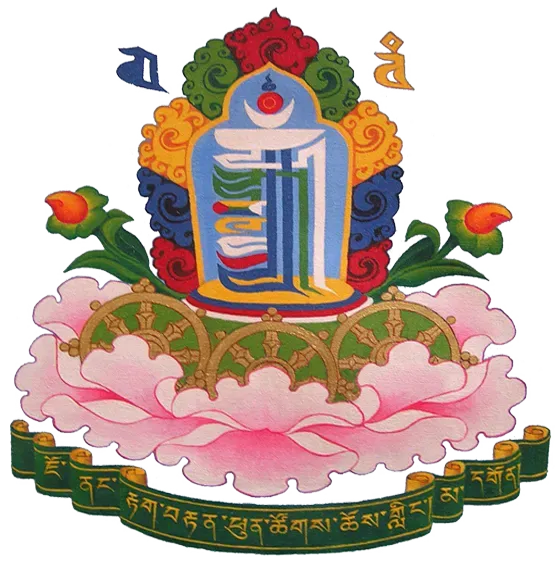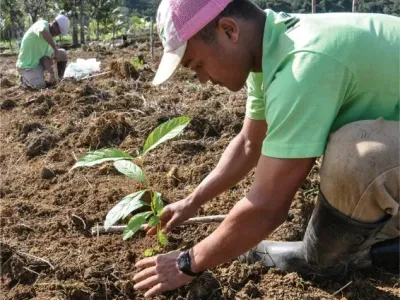The Monastery
Establishment and Early History
The Main Jonang Monastery stands as a testament to spiritual heritage and profound teachings. Established by the revered Lama Jinpa Gyatso during the sixth Rabshong of the Tibetan calendar—the first year of a 60-year cycle—it was aptly named Takten Phuntsok Choeling.
On the auspicious day of June 7, 1990, His Holiness the Dalai Lama graced the newly founded monastery, then known as Sangye Choeling, bestowing upon it its enduring name. Following the passing of Lama Jinpa Gyatso, the responsibilities for both religious practices and monastic administration were entrusted to the office of His Holiness and Namgyal Monastery.
Restoration of Teachings
In the Earth Tiger Year of the seventh Tibetan Rabshong (1997), His Holiness the 14th Dalai Lama returned to India to restore the venerable teachings of Jonang in this sacred land. To ensure the flourishing and expansion of the Shimla-based Takten Tamchoeling—established in 1615 by the esteemed Taranath—he entrusted the monastery’s legacy to Taranath’s reincarnated disciple, the venerable Khalkha, who was enthroned as the master of Jonang’s teachings.
Inauguration and Celebrations
On April 10, 1998, a gathering of luminaries, including the venerable Khalkha Jetsun Dhampa, Abbot Tulku Choekyi Nangwa, Master Ngawang Dorjee, Lama Yonten Gyatso, and Treasurer Kunga, graced the monastery to enroll around thirty monks, highlighting the special enrollment of the Abbot, Master, and Treasurer.
This momentous occasion culminated in the formal renaming of the monastery to Main Jonang Takten Phuntsok Choeling, celebrated with great fervor on May 18, 2000. The ceremony was graced by the Chief Minister of Shimla, who served as the chief guest, alongside the General Secretary and Deputy Secretary of the Central Tibetan Administration’s Department of Religion and Culture. Over a thousand devotees gathered in joyous celebration, marking a new chapter in the monastery's history.
On June 12, 2002, His Holiness the 14th Dalai Lama visited the monastery, imparting teachings on the hundred principles of Jonang, shared by the venerable Kunga, and enriching the teachings with insights into the specialized Kalachakra doctrine.
Recent Teachings and Lineage
In the Water Sheep Year of the seventeenth Rabshong, on June 3, 2013, the venerable Rinpochoe returned to his monastery, sharing teachings from the Lamrim’s "Spirit of Nectar," a heartfelt offering to all Jonang followers.
The year 1998 marked the ascension of Choeji Nangwa Rinpochoe as the first lineage Abbot of the monastery. A notable aspect of this period was the unwavering dedication of numerous Jonang students who traveled great distances each year, sacrificing their academic pursuits to contribute to the monastery's burgeoning curriculum, encompassing sutras and mantras aimed at fostering growth and development. In 2009, His Holiness the 14th Dalai Lama appointed Geshe Kunga Rinchen as the second lineage Abbot.
On June 16, 2014, His Holiness appointed Geshe Kunga Tsamchung as the third lineage Abbot, who continues to serve in this noble capacity to this day.
Current Faculty and Student Body
Today, the monastery boasts a distinguished faculty comprising over ten teachers and staff, including Dorji, the master of Jonang Gyel-tsap Rinpochoe, Abbot Geshe Choeji Nangwa, Geshe Kunga Rinchen, and the serving Abbot, Geshe Kunga Tsamchung. Other dedicated members include Treasurer Aku Kunga, Yonten Gyatso, Principal and Discipline In-Charge Kunga Nyelo, Cantor Pasang Thinley, and General Secretary Tenzin Thupten.
Moreover, the monastery is a vibrant hub of learning, with over a hundred students hailing from diverse regions, including Pemako, Mongolia, Tawang, Spiti, and Dolpo.
Monastic Curriculum
The monastic curriculum is thoughtfully categorized:
Mantra Studies
In the realm of mantra studies, the Vajra-master Choeji Nangwa imparts profound instructions on the Six Yogas of the Kalachakra Tantra, guiding students in the intricate art of drawing the lines of the sand mandala while maintaining the rhythmic tones of chanting.
Sutra Studies
In the realm of sutra studies, based on the esteemed Jonang traditional scriptures, great teachers such as Abbot Rinpoche, Kunga Rinchen, and in-service Abbot Kunga Tsamchung collaboratively bless students as they engage in the study of four Buddhist classes, alongside additional subjects like Pramana, Paramita, Madhyamaka, Abhidharma, and Vinaya—all imparted with meticulous care and intention.
In 2016, significant works such as "Sutra Narrative Perfection" by Kuchen Dolpo Sangye and "Perfection of Nyatika" by Nyawon Kungapal were introduced to deepen students’ understanding of Jonang scriptures, with many embarking on the path of monastic vows of perfection.
Beyond Literary Studies
Beyond the literary studies, the monastery offers a rich tapestry of teachings encompassing ritual practices, Tibetan calligraphy, grammar and poetry, English, Hindi, mathematics, and physics.
In essence, those who commit to a continuous eighteen-year study at this sacred institution are assured of reaping the fruits of both sutra and mantra while also acquiring profound knowledge of the world, both within and beyond their homeland.


